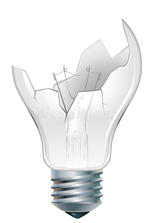 Yesterday, my six-year-old daughter asked me why I put up two fingers as I waved to the homeless man selling newspapers on the corner. I initially explained that I was greeting him as a way of saying “thank you” for always waving and always sharing some positive energy as we sit in traffic at the stoplight. The guy does a great job. She pushed: “But, why do you put up two fingers?” Me: “It’s a way of saying peace to the person, but just using your hands.” C: silence Me (reflecting further): “And, it’s something Bugsy (her grandfather, my Dad) used to always do when he was alive. So, I guess I got it from him.” As she pondered my response for what was certainly only a couple of seconds, I was triggered, as I often am, into the flooding memory of my Father and to the realities of the things he instilled in me that I only sometimes recognize as his. Behaviors. Posture. Perhaps a penchant for cursing. My sister says my hands look just like his (I also happen to wear his ring every day). I am particularly aware of his legacy each April, the month of his suicide - April 27, 2006. I always try to write something around this time as some small effort in helping people know they are not alone in living with suicide. Their loved ones were not alone in their struggles with Depression, with sexual abuse, with religious-guilt-turned-self-loathing. These things killed my Dad, and have killed countless others. There are even more of us still living with them. My daughter persisted… C: “But, what is peace, Daddy?” Me (buying time): “Well, baby. That’s a good question…” I muddled through words like happiness and presence and contentment and safety – although I emphasized that it’s not necessarily about comfort. I spoke of its opposites of anxiety and worry and concern – even physical violence in terms I believe she is ready to understand. I stumbled. I repeated myself. At some point, she seemed to accept at least some piece of what I offered as an answer and she stopped pressing. I was less accepting of myself. My answer wasn’t wrong. It was just a mess. But, maybe there’s something in that reality that’s at the core of the idea of peace. In the quiet moments that followed as we continued down the street, my head again returned to my Dad. What a mess! His struggle. His contradictions. His love for others and hatred of himself. The pieces of me that are of him. My empty dreams of him holding my children. The stories and reflections I will share with my kids in hopes they might understand what may simply not be understandable. Will they get it? Will they get him? Will they be angry? Will they be confused? Will they care? Can they love him without knowing him? Can they learn from his life? From his death? Does it matter? And, once again, I returned to peace. My Father is no longer suffering – for me, for us – despite himself. I understand why he committed suicide. It’s all a big fucking mess, but, yes, I am at peace. He is at peace. My family is at peace. So, maybe at its core, peace is just something that lives deep within us and is not definable, recognizable, or understandable by others. Perhaps peace is as unique in definition as its possessor. Maybe peace is best understood as a personal journey and a process that we must commit to for ourselves, and can only hope for others to embark upon for themselves - and we wish them the best. Throw up the two fingers: Peace! So, perhaps this is a better, if still unsatisfying, answer to my daughter’s question: Me: I don’t know what your peace is, baby. I hope every day that I am doing my part to help you define and find it for yourself, deep within yourself. I hope one day when you are older and have lived through some of the brutality and brilliance that life can put upon you, that I can ask you the same question, and you will know what it means to you, even if you struggle with the words to express it.
4 Comments
1. Talking in superlatives is the worst. Stop it. When we say something is the best, worst, greatest, biggest, and so forth, we minimize the rest of the world, which in turn undermines the very point we are trying to make. There is only one superlative of a category of things. So, unless you genuinely believe that meal was the worst, that person was the smartest, or that product was the best, maybe try a little harder and express what you think about it specifically. Speaking in superlatives is lazy and it is making us dumber – in time, probably the dumbest. Hail to the chief!
2. Finite terms are finished. They’re over. Unless someone has died, something has truly been destroyed, or a quantifiable time has irrevocably passed, we should stop saying things - and particularly people - are “finished”. We should stop dramatically asking “is this the end of…” seemingly anything and everything almost every day, and alternately resist over-selling the comeback when nothing or no one was ever actually gone. Life is a perpetually unfolding process that should be reflected in the language we use to describe it. We’ve killed the idea of time and lost our own control of how we express it. But, I bet the comeback story will be the best! 3. Hyperbole is ruining our lives. Literally. If we want to resist the current language zeitgeist, we can start by speaking in clear, honest, and direct terms and simply say what we mean. (I know: how boring!) We can stop, for instance, using “literally” to dramatize the figurative nature of what we are actually saying. Let’s make actual content the point of what we say. Information. Ideas. Questions. Let’s be literal and figurative, and know the difference. Everything doesn’t need drama to make a point or to prove its value. And, surely we shouldn’t accept drama itself as the point or value. Nothing “broke the internet.” Speak like a human, not like a headline. -breathes deeply- Thanks for your indulgence. Speak well, my friends. Image: https://www.theodysseyonline.com/the-harm-in-empty-words  1. Fall in love with your idea. Creative people generate lots of ideas. We love ideas. They excite and invigorate us. The ones we love the most can easily start to feel like a part of who we are, and they can even express the ways we want to relate to the world and the world to us. But, when it comes to actually relating to the world, our ideas are almost certainly wrong. They aren’t all wrong – they are just some wrong. And, if we are going to turn them into products that people want to use, we can’t afford to start thinking our ideas are right – no matter how much we love them (I feel like there’s a parenting metaphor here). When they leave our brains and enter the world, all of our ideas must evolve and adjust rapidly. This transformation is core to the process of moving creativity into the realm of innovation. 2. Stay in the lab too long. One of the hardest experiences of my professional life was putting an early stage mobile app into the crucifyingly critical hands of teenagers (and I used to do community organizing!). To make matters worse, it was an app trying to connect them to their schools! It was a beat-down – for months. But, it was also the only way we were going to get feedback quickly and broadly enough to iterate on the product and better understand the problem we were trying to solve – the real problem of communication in schools. Our idea was wrong – but there was enough right to build on. It would have been a whole lot easier to say “no, it’s not ready” and keep developing out of fear of what we might hear if we let people actually use it. However, if you accept that you are even somewhat wrong, this continued protection and isolation of the laboratory is actually a sure-fire way to dig yourself and your product deeper and deeper into holes of wrongness, running at features and investing in ideas that get too big to turn around when the user’s truth finally becomes your reality. 3. Respond to user feature requests rather than user problems. Users will make requests of your product based on their experience using it and/or their knowledge and experience of any similar or complementary products. When we pivoted our mobile communication product from education to healthcare, we took the opportunity to reassess the communication problems our software was trying to solve in the new industry. At the heart of communication complaints from both physicians and administrators was email. It was too spammy. Not built for physician workflows. There was no data tracking. It was overrun by people you really wished didn’t have access to your email address. As we started to redesign and retool our product, we also started to get early user feedback. And, whether in focus groups or one-on-one meetings with early users, as we tried to understand their problems, people constantly asked for features that they believed would solve their problems. If we had built our software based on their ideas and feature requests, we would have built email almost exactly - and exactly as they complained about it. We had to dig much deeper to try and solve a problem and not just fulfill feature requests that would add up to a product they already said wasn’t working for them. 4. Sacrifice craftsmanship for expediency - or sacrifice expediency for craftsmanship You need to have both, and there is no easy answer for which one is right at any particular moment in your product development. It is a constant tradeoff, but one that in the long run needs to trend toward craftsmanship. Building something well so that it delivers speed, performance, reliability, and can scale will rarely come back and bite you. Delivering something that appears to do that but then crumbles just when those attributes are most critical for your users will at best breach your user’s trust in your product and at worst send them running toward a competitor who promises the same. A good team constantly battles out these tradeoffs, and it is in these battles that the various voices of sales, product, engineering, design, and whoever else should have the opportunity to communicate their perspectives and priorities. The more one voice or one perspective drives product design the more likely you are to sacrifice expediency and craftsmanship, one for the other. |
Categories
All
Archives
April 2024
|

 RSS Feed
RSS Feed